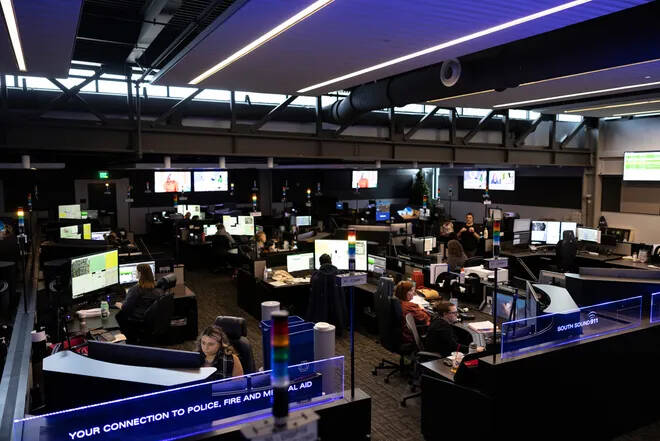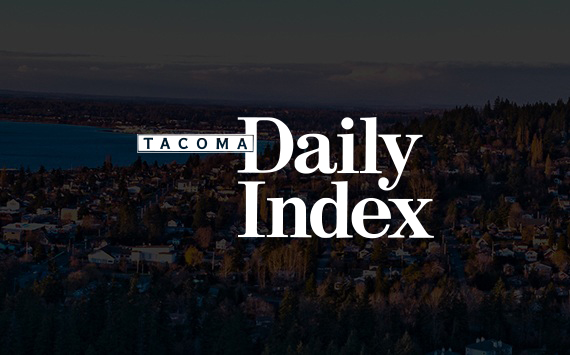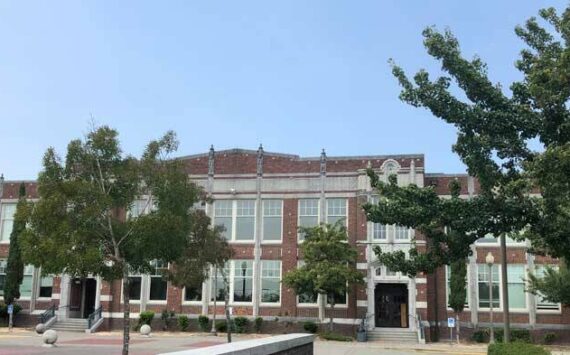During Dianna Caber’s 15-year tenure at South Sound 911 – the public safety answering center for a majority of fire and law enforcement agencies in Pierce County – dispatchers have rarely transferred anyone to a regional crisis and suicide hotline. Practically every call that reached their Tacoma communication center was handled by first responders.
“The only caller we were transferring to a crisis line before was someone who called and said, ‘can I talk to crisis?’” Caber, manager of the center, said. “Outside of that, it was getting entered for a law enforcement or fire department response.”
Practices fundamentally changed two years ago, after trained mental health counselors from the 988 Suicide & Crisis Lifeline embedded themselves inside Sound Sound’s call center under a state pilot program. Large numbers of calls are now diverted, at least partially, away from emergency responders like law enforcement.
The shift is one component of a broader and ambitious effort to overhaul Washington’s behavioral health response system following the launch of 988, which debuted across the country in July 2022 as a replacement for the National Suicide Prevention Hotline.
Changing from the former suicide hotline number, 1-800-273-8255, to an easy-to-remember three-digit replacement drove a significant increase in volume. Record numbers have connected with trained counselors via phone, text and chat since 988 launched. In Washington, calls are up 52% from launch, according to a state report published last December. Text messages rose 923%.
And call volumes have continued to grow monthly, said Courtney Colwell, director of 988 Services for Volunteers of America of Western Washington. Calls were up 37% since last year, and 8% between June in July.
Volunteers of America, based in Everett, is one of three providers handling 988 calls in Washington. VOA handles calls from a vast majority of the state, excluding those in King and six counties near Spokane.
Only about 10% of those calls require any sort of dispatch, Colwell said. About 10% of calls end with a mobile crisis outreach team being deployed, while about 2% might need a response from law enforcement or firefighters.
“A lot of people just need someone to talk to,” she said.
Much of the work being done around 988 is still in its infancy, but has shown promising results, Caber says. Their partnership with Volunteers of America has been a “huge benefit.”
One of the biggest innovations has been conference calls, where a 911 call receiver and 988 counselor are on the line at the same time with a caller – able to give them advice as they wait for first responders. About 16% of calls are now being handled in this format, Colwell said, while the rest are flat transfers.
Being together opens up many opportunities to support callers and maintain a “no wrong door approach,” Caber said. “No matter who you call and where you go, we’re going to get you to the right people.”
Someone to respond and somewhere to go
From the beginning, Washington officials envisioned 988 as an entry point to a more comprehensive system, adopting legislation to enhance the state’s behavioral health infrastructure to provide help beyond the initial call.
The concept, based on the ideal crisis continuum outlined by the federal Substance Abuse and Mental Health Services Administration, was that in addition to a crisis line to call, there would be local dispatch services and facilities for people to go for follow-up care.
“At launch, the promise for the future of Washington’s lifeline was threefold: someone to call, someone to respond, and a place to go,” then-Gov. Jay Inslee wrote in a 2024 blog post.
Three years later, many of those initial promises are still a work in progress, said Jolene Kron, executive director of the Salish Behavioral Health Administrative Services Organization. Several state workgroups continue to discuss the future of 988 and its role in the state’s crisis system.
A spokesperson for the Washington state Health Care Authority, the agency tasked with overseeing much of this work, did not make a representative available for an interview by press time.
One of the questions is how 988 fits in with the existing local crisis lines. Salish, one of 10 state-funded regional behavioral health providers, runs its own behavioral health hotline – distinct from and created prior to the launch of 988 – for residents of Kitsap, Jefferson and Clallam Counties.
The Salish Regional Crisis Line and 988 services coordinate with each other. Volunteers of America runs both, but they are separate entities.
Kron said this requires some call transferring between the two lines, in an effort to maintain a no-wrong-door approach. In an emergency, an individual can call either line, she says.
There are few transfers from 988 to the Salish Line, Kron said. Part of that is 988 has historically been used for suicide prevention, meaning most callers are only looking for someone to talk to and their issues are resolved on the phone.
If a call needs an in-person response, it has to be transferred to Salish, Kron said. They are the only ones who can dispatch the mobile crisis outreach team run by the nonprofit Kitsap Mental Health Services. Kron said that is something that could be changed down the road.
Challenges around georouting also exist for 988, to some degree, Kron said. Previously, when some dialed 988, their calls were routed to a call center based on their phone’s area code – not their actual location. That changed for major wireless carriers like T-Mobile, Verizon and AT&T last year, but smaller providers still have this issue.
“Many of the folks we would be serving are probably not on those larger plans, so we continue to support folks using the Salish regional crisis line for most expedient direct access,” Kron said. “There’s not a barrier to using 988, it would just mean an additional call transfer.”
This article was first published by the Kitsap Sun through the Murrow News Fellow program, managed by Washington State University. Conor Wilson is a Murrow News fellow, reporting for the Kitsap Sun and Gig Harbor Now, a nonprofit newsroom based in Gig Harbor, through a program managed by Washington State University. Washington State Standard is part of States Newsroom, a nonprofit news network supported by grants and a coalition of donors as a 501c(3) public charity. Washington State Standard maintains editorial independence. Contact Editor Bill Lucia for questions: info@washingtonstatestandard.com. Follow Washington State Standard on Facebook and Twitter.





